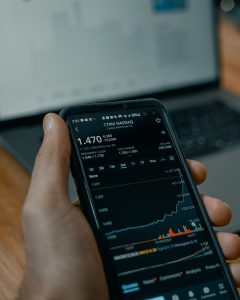Forex trading is the buying and selling of currencies in the foreign exchange market. It is a highly volatile market with prices fluctuating rapidly due to various factors, including economic and political events. To make informed trading decisions, traders rely on technical and fundamental analysis, which involves studying charts, trends, and economic data. However, there is always a degree of uncertainty in the market, and traders must be prepared for unexpected price movements. One such unexpected movement is deviation.
What is deviation in forex trading?
Deviation in forex trading refers to the difference between the expected outcome of an economic event and the actual outcome. Economic events, such as interest rate decisions, GDP reports, and employment figures, can have a significant impact on the currency markets. Traders often anticipate the outcome of such events by analyzing economic data, market sentiment, and other factors. However, if the actual outcome is significantly different from the expected outcome, it can cause a deviation in the market, leading to sudden price movements.
For example, if the market anticipates that the Federal Reserve will raise interest rates by 0.25% but instead decides to raise rates by 0.50%, it can cause a deviation in the market. Traders who were positioned for a 0.25% increase may suddenly find themselves on the wrong side of the trade, leading to losses.
How to trade deviation in forex?
Trading deviation in forex can be lucrative but also risky. Traders must have a thorough understanding of the market and be prepared for unexpected price movements. Here are some strategies for trading deviation:
1. News trading
News trading involves trading based on the outcome of economic events. Traders analyze economic data and market sentiment to anticipate the outcome of an event. If the actual outcome deviates significantly from the expected outcome, traders can capitalize on the price movement. For example, if the market anticipates that the Bank of England will keep interest rates unchanged but instead decides to cut rates, traders can go long on the GBP/USD pair, expecting it to rise.
2. Breakout trading
Breakout trading involves trading based on significant price movements. Deviation in the market can cause prices to break through key support or resistance levels, leading to a breakout. Traders can enter a trade once the price breaks through a significant level, expecting the momentum to continue in the same direction. For example, if the EUR/USD pair breaks through a key resistance level due to deviation in the market, traders can go long on the pair, expecting it to continue rising.
3. Range trading
Range trading involves trading within a range-bound market. Traders can identify key support and resistance levels and enter trades when the price reaches these levels. Deviation in the market can cause prices to move outside the range, leading to losses. Traders must be prepared to exit trades if the price breaks through the range. For example, if the AUD/USD pair is trading within a range of 0.7200-0.7300, traders can go long on the pair when it reaches 0.7200 and go short when it reaches 0.7300.
Conclusion
Deviation in forex trading can be both an opportunity and a risk. Traders must have a thorough understanding of the market and be prepared for unexpected price movements. Trading deviation requires a solid strategy and risk management plan. Traders must also be aware of the potential impact of economic events on the market and adjust their positions accordingly. By following a disciplined approach, traders can capitalize on deviation in the market and achieve their trading goals.





